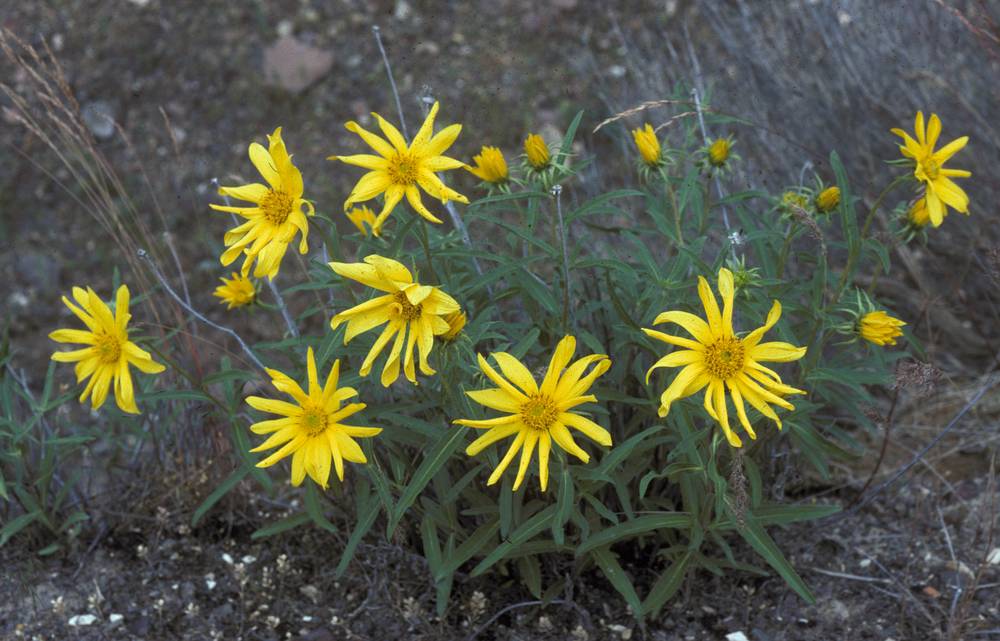
Plants perennial, 10–40 dm; rhizomatous.
Stems erect, usually glabrous, occasionally pilose.
Leaves opposite or distally alternate, broadly to narrowly lanceolate or elliptic, 3–20 × 0.5–4 cm, bases attenuate, margins entire or crenate-denticulate, tips acute or acuminate; petioles 0–1.5 cm.
Heads usually few, sometimes numerous.
Involucres hemispheric, 10–20 mm in diameter.
Phyllaries 30–38 in 3–5 series, lance-linear, 8–15 × 1.5–3 mm, margins hispid-ciliate, tips conspicuously attenuate, surfaces minutely strigose; outer sometimes longer than inner.
Paleae glabrous, inner tips blunt or acute.
Ray florets 10–20; rays 5–7 mm.
Disc florets 50+; corollas 5–7 mm, throats cylindric, lobes yellow.
Fruits 3–5 mm, glabrous; pappi of 2 lanceolate scales, 2–4.5 mm, and 0–2 shorter scales.
2n=34.
Subalpine meadows, riverbanks, swamps, open slopes, roadsides, disturbed areas. Flowering Jun–Aug. 800–2600 m. BR, BW, Owy. CA, ID, NV, WA; north to British Columbia, northeast to Manitoba, east to NE, southeast OK, south to Mexico. Native.
as described under Helianthus nuttallii ssp. nuttallii
Plants usually 200-300 cm. Leaves mostly alternate; blades narrowly to broadly lanceolate, apices acute to acuminate, abaxial faces hispid to hispidulous. Phyllaries: abaxial faces ± glabrate or sparsely hairy (longer hairs 0.5-1 mm).Flowering late summer-fall. Moist open places, ditches, roadsides; (300-)1200-2700 m; Alta., B.C., Man., Sask.; Ariz., Calif., Colo., Idaho, Kans., Mo., Mont., Nebr., Nev., N.Mex., N.Dak., Okla., Oreg., S.Dak., Utah, Wash., Wyo.Plants in the Dakotas and south-central and eastern Canada are intermediate between subsp. nuttallii and subsp. rydbergii and were placed by R. W. Long (1966) in subsp. canadensis; C. B. Heiser et al. (1969) returned this to subsp. nuttallii with the comment that it was hardly equivalent to other subspecies that they included in their treatment. The name H. ×luxurians may refer to hybrids between subsp. nuttallii and H. giganteus (Heiser et al.).